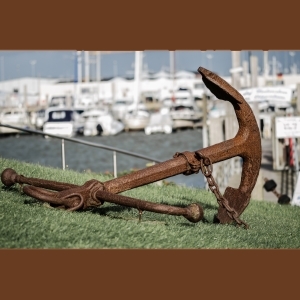Simple living Rich life
"Step outside, get some fresh air, and remind yourself of who you are and who you want to be, and always press on."
-
Fixed Costs: The #1 Reason You Never Have Enough Money
(8 minute read)
Does your paycheck have a leak? Like most, you don’t consider yourself lavish, you might even think you’re fiscally responsible, but your financial boat is always on the verge of sinking and you have no idea why. If so, what you need is to find that missing cash, and plug up those leaks. The most likely source of your leaks: fixed costs.
The term fixed costs is often reserved for business accounting and defined as costs, such as rent, that are constant whatever the quantity of goods or services produced. However, individuals also have fixed costs. We don’t often think about our personal finances in terms of fixed and variable costs, but we should.
In personal finance, fixed costs are those expenses which come in the form of a recurring bill. The bill comes no matter our income, or our desire for tickets to a show, or some nice chocolate. To put this in simple terms, too many recurring bills and you don’t have money for that summer trip to the beach your friends invited you to join.
To put it another way, every fixed cost you add punches another hole in your fun money boat. “Hurray, another phone bill,” said no one, ever.
Fixed costs are like an anchor on your bank account.
They don’t flex. Nor do they give. Job loss, sickness, or your washing machine breaks, the bills keep coming. It’s like they don’t even care what you are going through; cold-blooded cash suckers.
“Fixed costs put your expenses out of your control. For example, if I don’t want an apple, I don’t purchase the apple. I’m in control. However, if I subscribe to an apple-a-day delivery service, I have to spend money on the apple even if I don’t want it. I’m not in control.” – Clayton Daniel, Fund Your Ideal Lifestyle
Clayton Daniel in Fund Your Ideal Lifestyle suggests keeping fixed costs to 40% and debt to 10% of income. Half of total income going to fixed cost and debt is more than our personal target has been. We have had a maximum fixed cost and debt percentage of less than 35% and have decreased this steadily over 20 plus years together to a current level of 8%. The lower your fixed cost percentage the more freedom you have.
So what can you do to reduce fixed costs? First, you need to figure out what they are.
To calculate fixed costs follow these 3 simple steps:
- Step 1, and this is painful, but you must do it. Look at your paycheck, or if you are self-employed get out your accounting files. Now, let’s find the after tax income. Besides taxes, be sure to subtract any 401K contributions, medical flex plan contributions, or any other amount that is not deposited into your bank account. Yes, the government loves fixed costs. It hurts.
- Step 2, make a list of all your fixed costs, their amount, and frequency. Now, calculate the total amount of your fixed cost per pay period. For example, if you get paid bi-weekly, figure the yearly cost, then divide by 26 (because there are 52 weeks in a year). Here’s an example chart for someone paid bi-weekly to help get you started:

- Step 3, subtract your fixed costs total from step 2 from your actual take home income calculated in step 1.
Example: (take home income) $1000 – (fixed costs) $68.85 = $931.15
This is the amount of money per paycheck you have remaining to spend. It is critical to realize this is the money under your control. You have relinquished control of the rest in one way or another. To further calculate the percentage your fixed costs are of your income, divide your fixed costs by your take home income, then multiply by 100.
Example: ((fixed costs) $68.85 / (take home income) $1000) x 100 = 7%
The good news is there are many fixed costs you can regain some control over with a little effort and sacrifice.
Eliminate or reduce these 9 fixed costs:
- Vet Checkups. Before you start the nasty comment know that I am an avid animal lover. I live on a farm remember? My point here is caring for animal’s costs money. Sometimes they cost a great deal of money. If you don’t have the financial ability to care for an animal’s basic needs and some emergency care wait until you do to bring one home. If you want an animal then add the fixed cost of their care to your calculations above. Also, add in some emergency cost to your rainy day fund.
- Gym memberships. If you go to the gym congratulations; keep your membership. Yet, most people with gym memberships had good intentions when they signed up but they no longer use the gym. Don’t feel guilty there are plenty of ways to get in shape and exercise without a gym membership. As my Grandpa used to say, “Walking ain’t crowded.” I would add to that, neither is biking, hiking, or jumping rope in your living room to Michael Jackson songs.
- Insurance. While you would not want to cut your insurance coverage entirely it often pays to get an update on your policy. Consider for example, could you afford a higher deductible, get away with less of a life insurance policy, or save money with another company? Could you get by with an older or less valuable vehicle?
- License fees. By the same token, you cannot eliminate license fees. But, what you can do is reduce them. Like insurance, license fees are generally linked to the value of your vehicle. This value will go down with time. Therefore, you can potentially lower this fixed cost via two ways. One, sell a more valuable vehicle and purchase a less valuable one. In other words, ditch a BMW and get an Accord. Two, you can hold on to your vehicle for longer. The longer you make your vehicle last the lower the fees will get.
- Utilities. The simple act of turning the AC thermostat up or your heat down by 2 degrees can save a tremendous amount of cash. Also, remembering if you leave a room and turn the light off you can always turn it back on if you decide to return. Leaving electric items on such as televisions, computers, and ceiling fans when you no longer plan to be in the area is a waste. In addition, if you have the opportunity to replace such items as windows, HVAC, doors etc. make sure to get a more energy efficient model.
- Paid television. No one needs television, period. While you need a place to live and by law you must have some insurance if you own a car or house, you do not need television. This is a want, not a need; know the difference. Besides, you’ll have more time for what’s important.
- Subscriptions. This is a big one, as often yesterday’s obsession is long ago forgotten. This includes magazine subscriptions which you now consider junk mail, electronic book subscriptions, and music subscriptions be it online or satellite. Special delivery services, online shopping memberships, and unused apps fill out the list. Too often we keep the payments going long after our interest or use has waned. Take the time to cancel them.
- Rent. If you rent it is likely you live in a location with a large rental market. If you have tried everything else and your fixed cost are still too high you might need to consider a downgrade in your living quarters. Remember, moving cost money too, so factor in moving expenses, and fees that may incur.
- Debt. We’re going to include debt here even though we hope one day you are debt free and the bills stop coming. Nevertheless, while they remain, they continue to leak money out of your pockets.
Mortgage. Your mortgage payment should be no more than 25% of the figure you calculated in step 1 of the exercise above (determining your actual take home income). If it is, you are going to have a difficult time at best making ends meet. No fun for you. Consider also that if 25% is the actual payment on your mortgage it is likely you cannot afford to make any additional principle payments which by default means you are anchored to this debt for the full term of your mortgage (15 or 30 years). Unless you sell your home and move into one more affordable, or have an opportunity to refinance at a lower interest rate enabling you to make extra principle payments you could be slapped with this fixed cost every month for a good chunk of the rest of your life.
Credit card debt. Also known as consumer debt; the cancer of personal finance. This high interest, highly addictive form of fixed cost is the worst. It is a must go.
Car payments. Many Americans have come to accept a car payment as a permanent fixed cost. Nonsense, eliminate a car payment as soon as possible. Start moving in this direction by calculating the maximum car payment you can sustain. Now go buy a car with a lower payment than this figure. But wait, the trick is to make the maximum car payment possible only now you take the difference and put it in your savings account marked “new car fund.”
For example, if you can sustain a car payment of $250/month but can easily get by with vehicle that has a $175/month payment, pay the $175 each month but make sure to deposit the remaining difference of $75/month into your “new car fund” savings account. Now, while you may not have enough cash in your account to completely pay for your next new car when the time comes you will most certainly have a much larger down payment to offer. This in turn, will enable you to save even more money into your “new car fund” account and eventually you will have enough to pay cash for a car outright. Of course you will continue to deposit into your “new car fund” on a monthly basis so that you never have to make a car payment again.
To sum it up, calculate your fixed cost as a percentage of your take home income. To reduce your fixed costs and help fund more of what you want out of life, search through the list of possible cuts and find a place to start. Keep in mind this is by no means an exhaustive list of possible fixed costs draining your finances. Be sure to look for opportunities to cut them wherever possible.
Like what you just read?
Subscribe to Simple living. Rich life.
or read more right now from the Archive.



